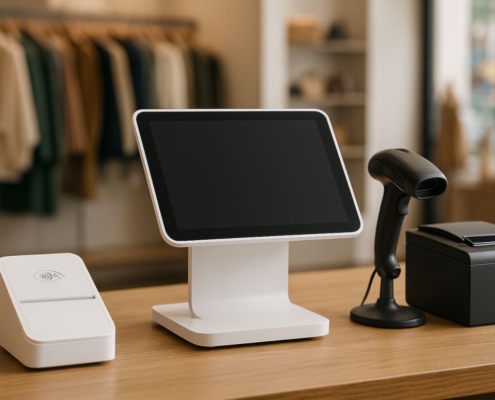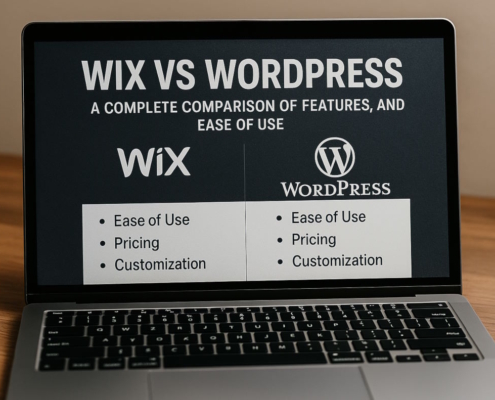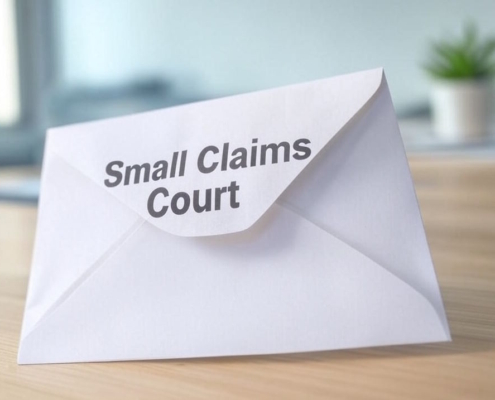What Does a Deed of Trust Contain?
There is a lot of paperwork involved with getting a mortgage. A deed of trust is one legal document that can be necessary for the home closing. One way to ensure that a mortgage will be paid off is to utilize a deed of trust, which transfers ownership of the property to a third party until the loan is fully repaid.
If you’re looking to buy a house, it could be helpful to know what a deed of trust is and how it works.
After a real estate transaction, the buyer and the lender enter into an agreement known as a deed of trust. Legally, the mortgage lender will retain title to the property until the homebuyer repays the loan, as stated in the deed of trust, often known as a “trust deed.” In lieu of mortgages, several states allow the use of deeds of trust as a secured real estate transaction.
The borrower (the trustor), the third party (the trustee) who owns the property legally, and the lender (the beneficiary) are the three persons engaged in a deed of trust. To be enforceable under the law, a deed of trust has to contain particular details. Among them are:
- The original loan amount
- Detailed information about the property
- Disclosure of identities of all parties
- Both the loan’s start and end dates
- Supplemental documents known as “riders” that detail the specifics of a mortgage or property
- Fees
- What occurs in the event of a mortgage default
Depending on the specifics of the transaction, further details may be required.
What Is the Function of a Deed of Trust?
The lender receives one or more promissory notes from the borrower in return for the deed of trust. Borrowers often sign promissory notes, which promise to repay a loan in full at a later date. It comprises the conditions of the house loan, including the interest rate, total loan amount, payback periods and other loan responsibilities.
What Happens When You Pay Off a Deed Of Trust?
Upon full repayment of a debt, the promissory note will be recorded as “paid in full,” and the buyer will be given back the deed. While making payments on the house, the buyer will only be able to retain a duplicate of the promissory note for their own records; the lender will retain the original.
Upon completion of a trust deed, the trustee will issue a reconveyance deed. This deed discharges the lender’s lien and returns ownership of the property to the borrower. To formally clear the title, you need to record this paperwork with the county recorder’s office.
If You Fail to Pay Off Your Deed of Trust, What Will Happen?
The mortgage lender’s trustee may, in the event of a borrower’s failure on a trust deed, begin nonjudicial foreclosure proceedings. In most cases, this procedure entails serving many notifications and, in the end, selling the property at a public auction to settle the debt.
What Are the Similarities Between a Deed of Trust and a Mortgage?
Signing a promissory note, mortgage, or deed of trust is a common practice when getting a mortgage or home equity loan.
A mortgage and a deed of trust are both used while signing a promissory note.
You commit to repaying the borrowed sum in installments, typically monthly, when you sign a promissory note for a house loan. In essence, it’s an “IOU.”
The security interest in the property is created by the mortgage or deed of trust.
Lenders have a security interest in your house when you use a mortgage or deed of trust to secure a loan. In order to establish a claim on the property, the lender files the mortgage or trust deed with the land records.
Liens on property can be created in certain states through mortgages and in others through deeds of trust. Other states employ a similar-sounding mechanism, such as a “security deed,” to establish security interests.
How Does a Deed of Trust Differ from a Mortgage?
A deed of trust differs primarily from a mortgage in two key respects:
Although there are three parties involved in a deed of trust, there are only two in a mortgage.
Additionally, deeds of trust are normally repossessed through a nonjudicial procedure, but mortgages are often foreclosed through the courts.
What Is a Mortgage?
In a “mortgage,” the borrower agrees to use the property as collateral to secure a loan.
What Roles Do Different Parties Play in a Mortgage?
In a mortgage agreement, the two sides are:
The person who is liable for repaying the loan each month is known as the mortgagor, while the lender is known as the mortgagee.
Process of Transferring a Mortgage
Banks and other organizations frequently transfer mortgages to one another. Any transfer of a mortgage loan from one person to another is recorded and usually kept in the county records.
The term “assignment of mortgage” describes the legal process by which one party transfers ownership of a mortgage to another. The county land records typically document each assignment.
What is MERS?
In order to save money and eliminate the hassle of recording each transfer of ownership of a mortgage, deed of trust, or servicing rights, the lending industry established Mortgage Electronic Registration System, Inc. (MERS), an electronic registration and clearinghouse. The MERS database records the transactions.
When a loan changes hands, MERS keeps tabs on it as a nominee (or agent) for the original owner. Since MERS records the transfers in its computerized system, separate assignments are no longer necessary for each loan transfer. After a loan is assigned to MERS, it can be purchased and sold several times thereafter without triggering further assignments.
The mortgage or deed of trust will often name MERS as the lender’s nominee in a home loan transaction. Sometimes, once the loan closes, the lender may designate MERS as their only nominee and assign the loan to them.
You shouldn’t be shocked if you learn that MERS took over your mortgage or deed of trust at some point. Foreclosure proceedings cannot typically commence until the loan is transferred out of MERS’s name.
What Will Happen If I Can’t Pay My Mortgage?
In the event that the mortgagor fails to make the payments or otherwise violates the terms of the loan agreement, the owner of the loan has the legal right to foreclose and sell the collateralized property. Mortgages are a common kind of collateral in states that follow the judicial foreclosure process.
On the other hand, nonjudicial foreclosures are the norm in a handful of mortgage-using states, such as Michigan and Alabama. Lenders are able to foreclose on mortgages outside of court in these states due to provisions in the contracts and local legislation.
What People Are Involved in a Deed of Trust?
To reiterate, there are two parties involved in a mortgage, but three in a deed of trust: the party making the loan (the “beneficiary”), the party lending money (the “trustor”), and the party acting as trustee.
An impartial third party, such as a bank, title firm, or trustee corporation, serves as the trustee. This means that the trustee has “bare” or “legal” rights to the land. The ability to sell the property is with the trustee, who retains the title in trust. If the borrower goes into default, such as missing a payment, the security document’s “power of sale” provision will allow the nonjudicial foreclosure procedure to sell the property.
The borrower is granted equitable title, together with the right to use and be responsible for the property. The borrower acquires the legal title to the property upon full repayment of the loan. The trustee, however, will take charge of the foreclosure procedure and the public auction sale of the property in the event that the borrower fails to make their payments.
Alternatives to a Deed of Trust or Mortgage Used in Certain States
For secured transactions, several states utilize instruments that seem similar to mortgages and deeds of trust, but are actually quite different. A “security deed” is the most common type of contract in Georgia that gives an investor a security interest in a piece of land.
Transferring a Deed of Trust — The Process
Similar to mortgages, the assignment of a deed of trust is often documented in the county records when it is transferred from one party to another. “Assignments” describe the transfer of both mortgages and deeds of trust. An “assignment” is a legal document that allows one party to transfer their interest in a mortgage or deed of trust to another.
What Will Happen If I Don’t Pay My Deed of Trust?
States using deeds of trust are likely to have nonjudicial foreclosures. Lenders can foreclose without judicial involvement if the deed of trust includes a power of sale clause. However, even if a nonjudicial foreclosure method is available, the lender may still opt to foreclose through the courts.
Nonjudicial foreclosures must adhere to the procedures outlined by state law. When compared to court foreclosures, nonjudicial foreclosures usually happen considerably faster.
Should You Use a Deed of Trust or a Mortgage?
Having a mortgage could be advantageous for borrowers in the event of a home loan default. Foreclosures that go through the court system usually take far longer than those that do not. During the course of the foreclosure process, you will have more time to remain in the property without making any payments, provided that you reside in a state that allows judicial foreclosure.
If you wish to contest the foreclosure but your state mandates a court foreclosure procedure, you might save time and money by joining the current action. A more time-consuming and expensive alternative is to initiate your own lawsuit in the event that your foreclosure goes forward without court oversight, known as a nonjudicial foreclosure.
However, if the lender forecloses a deed of trust nonjudicially, they are not able to obtain a deficiency judgment in some states. This is one advantage of a nonjudicial foreclosure. Nevertheless, in some states, deficit judgments following judicial foreclosures are not permissible under specific conditions.
When a borrower defaults on their payments, a deed of trust allows the lender to foreclose through a nonjudicial procedure more swiftly and at a lower cost.
Can I Pick Between a Mortgage and a Deed of Trust?
The decision to execute a deed of trust or mortgage is not up to you. In most cases, the usage of mortgages or deeds of trust depends on your state’s real estate market and the regulations that the market’s lobbyists have forced through your state’s government.
Some states allow lenders to utilize both mortgages and trust deeds. But even in these places, the lender gets to pick the paperwork you have to sign. You are not in a position to decide.
If My Mortgage or Deed of Trust Permits It, Should I Receive Notices By Electronic Means?
Lenders may notify you electronically, via email, as stated in the standard Fannie Mae and Freddie Mac mortgage and deed of trust forms, provided that you have agreed to this (unless the law mandates another delivery method). There are pros and cons to receiving alerts in this manner. It’s a great method to receive notifications, but what if a very crucial message ends up in your trash folder? You might fail to notice crucial information, like the fact that you are behind on the loan payments. If you aren’t diligent about checking your email on a regular basis, this delivery technique can potentially cause issues.
The servicer is required to deliver notices by letter if you have not given your approval for electronic notices. You must read and respond to any correspondence from your servicer if you choose this option. You should read the notices you receive in the mail before throwing them away.
How Can I Verify the Existence of a Mortgage or Deed of Trust?
You may identify the kind of security for your home loan—a mortgage or a deed of trust—by:
- Consult the paperwork you got when you completed escrow on your home
- Get in touch with your loan servicer
- Visit your county’s records office to get a copy of the recorded document
You can also find these records online from time to time.































